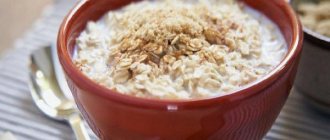At the beginning of the last century, a fashion arose for fasting for medicinal purposes. To a large extent, the problem of forced hunger was solved, so civilization wanted to use it as a medicine.
Gradually, the method migrated from alternative medicine to the masses. Young beauties and older women are not afraid to try questionable methods on themselves in order to get rid of extra pounds. It’s scary to imagine how many people agree to do a lot, just not to seek help from specialists.
Proponents of the technique attract newcomers with sky-high results, come up with clever ways to refuse food and water, calling their development a “panacea” for all problems.
Let's approach the matter wisely and find out what is meant by therapeutic fasting, study its pros and cons, learn about existing contraindications and understand the varieties of this approach to losing weight and improving the health of the body.
Proper fasting treatment involves turning to specialists, focusing on achieving results and following all the principles of the system. In order to improve health and lose weight, a person voluntarily refuses food, and sometimes water too. During the entire duration of the program, it is forbidden to eat food at all. And this must be done until the body is completely cleansed. The timing of abstinence from food depends on individual characteristics.
Features of fasting
Before fasting, you have to prepare yourself mentally. A person should be in a good mood, have a positive attitude towards life and enjoy every day. Only the right attitude will help prepare the body for cleansing. The psychological factor plays a huge role in the smooth functioning of all organ systems. If you are in a state of depression, apathy or even anger, you may not expect results in the form of weight loss or rejuvenation. Negative emotions impair the functioning of organs. A state of stress creates a feeling of hunger and a desire to snack. A person needs fasting for physical and psycho-emotional health. Moral purification is implied. The fasting technique involves a gradual transition from the usual diet to restrictions. Correct exit from the program is also important. The main thing is to act consistently, otherwise wrong steps will cause your health to deteriorate. Beginners should not attempt long-term fasting. The body is not able to quickly adapt to such a radical regime. It is better to give preference to short but cyclical experiments. It will take time to get used to changes in metabolism and eating behavior itself.
What diseases does hunger cure?
Proponents of the technique claim that fasting cures a person from a number of ailments:
- Cardiovascular diseases: blood pressure disorders, angina pectoris, thrombosis, post-infarction and post-stroke conditions, coronary artery disease, varicose veins, anemia.
- Weight problems, gout, scurvy, jaundice.
- Diseases of the digestive tract: gastritis, colitis, ulcers, stool disorders.
- Diseases of the respiratory system: asthma, bronchitis, pharyngitis, sinus inflammation, pneumonia.
- Hormonal disorders: diabetes mellitus, goiter, prostate adenoma.
- Diseases of the nervous system: chronic migraine, sleep disorders, neuroses.
- Mental illnesses: depression, schizophrenia, epilepsy.
- Infections: flu, sore throat, smallpox.
- Eye diseases: glaucoma, keratitis, stye.
Is it possible to drink coffee while fasting?
This technique is divided into two types. In the first case, you are allowed to drink water and drinks, in the other - a complete abstinence from liquids.
Drinks help get rid of attacks of nausea, dizziness and dull the feeling of hunger. Drinking coffee is only possible for short-term options. If the goal is to rejuvenate the body and lose extra pounds, then you will have to choose a long hunger strike, giving up liquids.
Exit rules
Even if fasting is carried out in compliance with all the rules, but the exit from it does not comply with the recommendations, you may not expect results in terms of weight loss.
Moreover, the wrong way out of a long fast can lead to problems in the functioning of the intestines, including obstruction and further surgical treatment.
From water fasting for weight loss
Here's how to break water fasting for weight loss:
- the duration of the gradual return to the usual diet should be equal to the duration of the period of complete abstinence from food;
- in the first days, sugar, animal protein, milk and fermented milk products, fatty foods, bread and any pastries are excluded;
- a plant-based diet will be optimal - you can add 100-150 g of a “new” product such as apples, pears, cucumbers, tomatoes per day;
- The food consumed at the exit should be crushed;
- Every other day you definitely need to give yourself a cleansing enema.
From one day
A fasting day, even with a complete refusal of food, does not lead to any fundamental changes in the functioning of the body, so the way out of such short-term fasting will be simple and quick. Doctors recommend the next day:
- drink 200 ml of clean warm water on an empty stomach;
- after 20 minutes, eat 100-150 g of vegetable salad (cabbage + carrots + apple);
- after 1 hour, consume 300 g of stewed or boiled vegetables;
- eat only plant foods for the rest of the day;
- Replace dinner with herbal tea.
The second and subsequent days are not limited by anything, but in order to avoid unpleasant consequences, you should give preference to a menu based on fermented milk products/drinks, water-based cereals and herbal products.
From three days
72 hours of complete food abstinence is serious stress for the body . Therefore, exiting the “diet” must comply with the following principles:
- for the first 3 days after the end of the hunger strike, you can only drink clean water, eat boiled or stewed vegetables without vegetable oil;
- on the 4th day you can add kefir, natural yogurt (the percentage of fat content should be minimal), water porridge without butter to the menu;
- 5th day – there is a return to the usual diet, but with careful consumption of meat, fish, and baked goods.
From the weekly
Scheme for breaking a seven-day fast:
| First day | water in any quantity + 1 liter of fresh juice diluted with water in a 1:1 ratio |
| Second day | in the first half of the day, drink 500 ml of “pure” juice, in the second half, 500 g of vegetable puree in small portions |
| Third day | porridge with water, vegetable puree in small portions |
| Fourth day | vegetable broth soup, boiled vegetables, fresh and soft fruits |
| 5-6 days | You can add any fermented milk products to the previous diet |
| 7 days | boiled eggs or steam/oven omelet are a plus |
All days, food should enter the body in minimal portions; if a feeling of hunger occurs, you first need to drink water and wait 5-10 minutes to confirm the signal to the brain about the need for satiety.
From a long time
The most difficult way out, because you will need to follow the rules for several weeks in a row:
- 1-7 days of release - you can drink 1 liter of orange, tomato, carrot, apple juice, diluted with water in a ratio of 1:2 and prepared without pulp;
- Days 8-14 – drink the same juices, but undiluted, 1 liter per day;
- 15-21 days – steamed vegetables, rice, buckwheat porridge, and fresh fruits in small quantities are added to the juices.
What is therapeutic fasting
Let us repeat, therapeutic fasting is a voluntary refusal of food in order to improve the health of the body and get rid of the hated kilograms. The so-called velvet fasting according to Ziganshin is very popular among supporters of extreme methods. Another system that became famous was proposed by Paul Bragg. The system includes recommendations for observing fasts and lists of foods that should be abandoned forever. In previous articles, we talked to you about fasting, the author of which is E. Osumi. According to his theory, it was divided into schemes: 16/8, 12/12, 14/10, 20/4, 36, 5/2 hours. But today we are talking about other two types: water and dry.
On the water
Water fasting involves abstaining from food. Drinking the daily amount of water is a prerequisite for this type of diet. Due to the deprivation of the natural function of digesting solid food, the digestive tract begins to cleanse itself. First, feces are removed, then waste and toxins. The intestinal microflora is normalized, since pathogenic organisms are not able to exist in conditions of lack of nutrition.
Long or cyclical courses without food trigger autophagy processes. The cells begin to cleanse themselves. In this case, harmful components are removed, thus explaining recovery from certain diseases. Some adhere to a soda and water fast. The water system of morning fasting by Ishihara Yumi is very popular.
You can lose up to 1 kilogram per day on this diet. But such large numbers for one day are frightening and raise doubts about the ability to maintain the result after leaving the diet.
Dry medicinal
Dry fasting involves complete abstinence from food and water. Fortunately, even the most outspoken fighters against waste and toxins do not advocate using this method for more than two days. It is possible to live without food for some time, but without water, you are more likely to develop dehydration. Water is the force that gives organisms life. We must not forget this simple rule.
Varieties:
- Complete dry fasting - author L.A. Shchennikov. Lasts 7, 9, 11 days.
- Cascade - author V.P. Lavrova.
- Fractional (intermittent) - author S.I. Filonova.
Types of fasting for weight loss
A fast for weight loss can be carried out in different ways - aggressive, extreme and gentle. Each type has its own characteristics, advantages and disadvantages.
Dry
It is considered the most difficult type of fasting because it does not even involve drinking water. Divided into two subspecies:
- gentle - it is allowed to come into contact with water: wash, shower, and so on;
- hard - any contact with water is prohibited.
The essence of losing weight on dry fasting is that the body, in the absence of water, must rebuild itself and receive the substances necessary for normal life from its own reserves. Pros of dry fasting:
- all processes occurring in the body are activated;
- excess weight disappears gradually, without sudden “jumps”;
- breathing becomes deeper and more even;
- the load on the heart becomes significantly lower;
- there is no feeling of constant fatigue;
- signs of fullness in the stomach and “clogged” intestines disappear.
The disadvantages of this type of hunger strike lie in its incorrect implementation, so the following recommendations must be followed:
- You should start with a daily refusal of food. For this, one day of the week is selected (for example, Monday), and only when short dry fasting is easy for general well-being, you can increase the 24-hour period by several hours every week.
- It is important to prepare for a complete refusal of food - 3 days before the expected date, you need to completely eliminate alcoholic beverages, everything fried, fatty, smoked, coffee, salt and sugar from your diet. The best foods these days will be fresh fruits, boiled vegetables, dried fruits, sprouted grains, cereals, and nuts.
- On preparatory days you need to drink a lot of fluids. Pure water, herbal teas, compotes and fruit drinks, juices without added sugar are taken into account.
- Exit from dry fasting is carried out within 24 hours and the next 3 days. In the morning on an empty stomach you need to drink a glass of cool water (boiled, not mineral) - this is done slowly, in small sips. After 20 minutes you need to take a cool shower. During the day, you are allowed to eat only fermented milk products, chicken broth without salt and bread, in small portions and often. On the second day and subsequent days, porridge and boiled vegetables are gradually introduced into the menu. You cannot eat raw vegetables and fruits for 3-4 days.
Dry fasting should not be carried out for more than 2 days in a row.
Watch this video about how dry fasting affects the human body:
Cascade
Involves alternating dry, hungry days and vegetable days. There are two options:
- compressed cascade fasting - 24 hours fasting/48 hours vegetative, 48 hours fasting/72 hours vegetative, and then, respectively, 3 days/4 days, 4 days/5 days and ends with 5 days of fasting;
- long - 24 hours fasting/24 hours vegetative, 48 hours fasting/48 hours vegetative, and so on until an alternation of 5 days fasting and the same number of vegetative days is achieved.
It is better to make the first day hard dry, without contact with water, but on the plant day you need to drink a lot of liquid, including clean water and herbal teas, you need to have dinner at most at 18-00. It is more suitable for beginners to lose weight through fasting to choose the long cascade option - it is more gentle.
The body will be much easier to prepare for serious restrictions if you switch to a raw food diet a week before the start of fasting . The exit from the cascade is done according to the following scheme:
- drink a glass of warm water in small sips;
- take a shower;
- after 2 hours, drink 100-150 ml of low-fat kefir;
- After an hour, eat 100 ml of chicken broth.
Eating kefir and light broth should be continued for 2 days; on the third day, you can introduce familiar foods, but in small portions. Benefits of losing weight with cascade fasting:
- weight loss is progressing rapidly;
- the presence of plant days makes the process easier, the body responds adequately to the lack of food;
- fabrics are cleansed of waste and toxins;
- After the hunger strike is lifted, the lost kilograms do not return.
Cyclic
The essence of the method is periodic refusal to eat at regular intervals. Fasting is relatively easy to maintain because the body can go without food for 24 hours. It is better to do a cycle of 3 days of “food” and 1 day of fasting. In the evening before the main day, have dinner no later than 18-00 and fermented milk products - kefir, sour cream.
The best option for cyclic fasting is a week of abstaining from food once a month. But you need to approach this schedule gradually, increasing the time literally by an hour each time. You need to return to your usual diet wisely: on the first day it is better to limit yourself to boiled fish, chicken broth and yogurt or kefir.
Partial
The most gentle fasting method, suitable for beginners. Its essence lies in a sharp reduction in calories entering the body with food per day to 200-300 Kcal. This can be achieved by excluding all high-calorie foods from the menu and switching to eating juices, fruits, vegetables, kefir, and water-based cereals.
Partial fasting can be alternated with regular days, the best results are achieved with a 5/5 or 10/10 schedule. You can repeat such alternations an unlimited number of times.
As a preparation, enemas are used to cleanse the intestines, but this is not a mandatory “program”.
Benefits and harm to the body
Let's talk about the benefits of fasting:
- Respite for the gastrointestinal tract. Due to the abundance of food, a person often does not control his appetite. Overeating often occurs, so rest for the digestive system is also necessary.
- Metabolic restructuring. During a hunger strike, the body uses up its own internal energy reserves. Fat reserves begin to decrease, which leads to weight loss.
- Longevity. The rejuvenation effect is achieved through the effects of hunger at the cellular and molecular levels.
- Cure various diseases, the list of which we provided above.
It turns out that the technique is useful for weight loss, rejuvenation and healing. But, do not forget about the other side of the coin.
Flaws:
- The risk of muscle loss increases. During a hunger strike, the body does not immediately begin to break down fats. Glucose and proteins are the first to be shot. Long-term refusal of food leads to muscular dystrophy.
- Poisoning with ketone bodies - fat breakdown products. With a lack of food, the level of glucose in the blood decreases - a lack of insulin develops. Fats cannot undergo complete oxidation under such conditions. This is how acidosis occurs, the main symptom of which is the smell of acetone from the oral cavity. In this case, we can talk about increasing intoxication.
- Appetite disorders. Long-term refusal of food results in the appearance of an uncontrollable feeling of hunger. It becomes difficult for a person to control his appetite, and regular overeating begins.
- Modern doctors argue about the accumulation of toxins. They claim that the lymphatic, urinary and circulatory systems cope with their own functions without any additional techniques.
The benefits of fasting for cleansing and weight loss
Despite the contradictions between folk experts and medical luminaries, the desire to refuse food for a long time has not disappeared; you should know that fasting, like any other method aimed at losing excess weight, has its own rules.
Abstinence from food affects the human body as follows:
- since the body does not receive calories, it begins to use up its own reserves, which have been accumulated over a long time;
- cleansing of toxins and toxic substances occurs, due to this excess weight melts, the body rejuvenates, becomes healthier, all metabolic processes are accelerated;
- the body begins to work in a new mode, which allows you to forget about previously manifested diseases;
- after a two-week abstinence from food, the size of the stomach decreases, so the person will be satisfied with less food in the future;
- even after a week of fasting, a person’s taste habits change, he begins to reject everything that is harmful and strives to switch to a healthy and wholesome diet, thanks to which weight loss continues.
Unlike dietary and low-calorie nutrition, weight does not return after fasting, and as a result of changing eating habits, weight loss continues. The exception is when fasting does not follow the rules. For most people, after such a cleansing, the digestive system works in a new mode, the liver and kidneys are cleansed, and blood tests show better results. The sense of smell and taste is heightened, and sleep improves.
How to fast properly
Before a fasting diet, it is better to let the body get used to it by making the diet lighter. All fatty foods, animal proteins, baked goods and sweets are completely excluded from the menu. You should eat fruits and vegetables, but without overeating. To fast properly, you should familiarize yourself with the general recommendations.
How long can you fast without harm to your health?
Refusing food for more than three days can cause severe deterioration in health. Prolonged fasting promotes the breakdown of proteins and glucose found in the muscles. Muscular dystrophy develops.
An additional negative effect is the lack of nutrients and vitamins. The functioning of all body systems is disrupted. Although therapeutic fasting is a health program, it must be used very carefully.
How to prepare
Preparation in duration should take half of the total fasting time, and at best be equal. The preparatory stage involves a gradual reduction in the amount of food eaten. The hunger strike process is divided into three stages.
First stage
At the first stage, food arousal increases. It lasts about two days. An unprepared psycho-emotional background causes the development of anxiety. This is more typical for beginners.
The first stage is characterized by attacks of hunger, dizziness, stomach pain, rumbling, increased sensitivity to food, and worsening mood. A person begins to get irritated by any mention of food or the sight of dishes.
Second stage
The phenomenon of ketoacidosis increases and lasts about a week. There is a “metallic” taste in the mouth, the tongue becomes covered with a white coating, and hunger is dulled. Exacerbation of chronic diseases often occurs. It is recommended to refrain from physical activity and stay in the fresh air longer.
Third stage
Adaptation to the lack of food occurs. Clinical manifestations of diseases disappear. Daily weight loss is about half a kilogram.
Therapeutic fasting at home
At home, it is recommended to try a trial refusal to eat for 34 hours, no more than once a week, on certain days. A systematic approach will help increase the number of days to three or more.
Daily allowance
Avoiding food for one day is the safest option. A daily diet will allow the organs of the digestive system to rest and allow the microflora to recover.
Recommendations:
- Go on a fast on the weekend, giving up heavy food in advance. Try to drink more.
- Take a bath, shower. Walk more.
- Periodic practice will help get rid of headaches and dizziness.
- At the end of the program, it is recommended to prepare salads from carrots, cabbage, apples and raisins. You can season it with lemon juice.
- Keep for no longer than 24-36 hours
Three-day
The stress from the three-day course is already greater than from the previous option. It is better to start it after a one-day fast.
Recommendations:
- Give up heavy meals for a week. For three days, eat plant foods, and on the day you start the diet, do a cleansing enema.
- Take frequent baths and showers. Drink more clean water.
- Listen to your own well-being. If it’s difficult to complete the course, give up the idea.
- You need to exit the diet gradually, without overeating.
Seven days
Week-long fasting has therapeutic purposes. During this time, self-destruction of diseased unnecessary components of cells and tissues occurs, and the regeneration process begins.
Recommendations:
The preparatory stage should take at least two weeks. During this period, animal products, alcohol and sweets are excluded. In addition to cleansing the intestines, cleansing the liver is required. You can take a course of special medications.
Correct entry into fasting for weight loss
The body should be prepared gradually for the upcoming tests.
- Before starting, it is recommended to carry out a number of cleaning procedures.
- You need to gradually remove heavy foods from your diet. For some time before the start of fasting days, it is advisable to include only plant foods.
- Some experts recommend taking a laxative the night before starting your fast. This will speed up the cleansing process.
Breaking out of fasting
Entering a fast and sticking to it is not an easy task. But it is even more difficult to get out of it correctly. The lost kilograms will partially come back, but a competent exit will help reduce their amount.
General recommendations:
- on the first day you need to stick to a juice diet - drink only juices;
- on the second day, consume grated fruits;
- the menu for 3-4 days will be supplemented with soups and cereals;
- after a week you can eat nuts and proteins;
- Further, a dairy-vegetable diet is recommended.
Fractional nutrition and small portions
Try to eat small portions throughout the day – 5-6 times. The intervals between meals should not exceed three hours. Fractional meals in small portions are the main rule for overcoming long-term hunger.
Vegetable and fermented milk foods
After long fasts, it is recommended to adhere to a dairy-vegetable diet. Fermented milk products should be added to the diet after five days.
Compliance with time intervals
Compliance with time frames is a very important point. The longer you refuse food, the longer the recovery period will be. Even after a short-term fast, it will take several days to eat a recovery diet.
How to avoid going hungry
Hunger is not all that a person experiences when refusing food. Fatigue, weakness, decreased performance and physical activity will become indispensable companions. For these reasons, many people get frustrated and quit what they started. In order to pull yourself together in time, it is recommended to remember what motivated you in the first place. A small amount of water will help dull the feeling of hunger. You should take your mind off thoughts about food: take a walk, do what you love, do breathing exercises. Anything, but do not allow yourself to become overtired.











